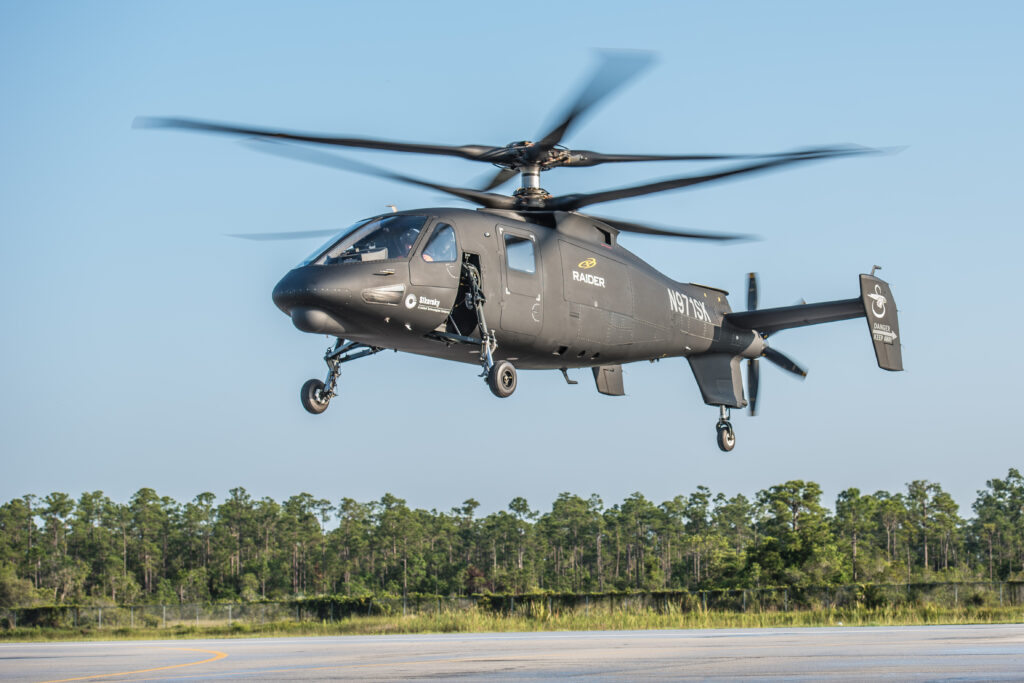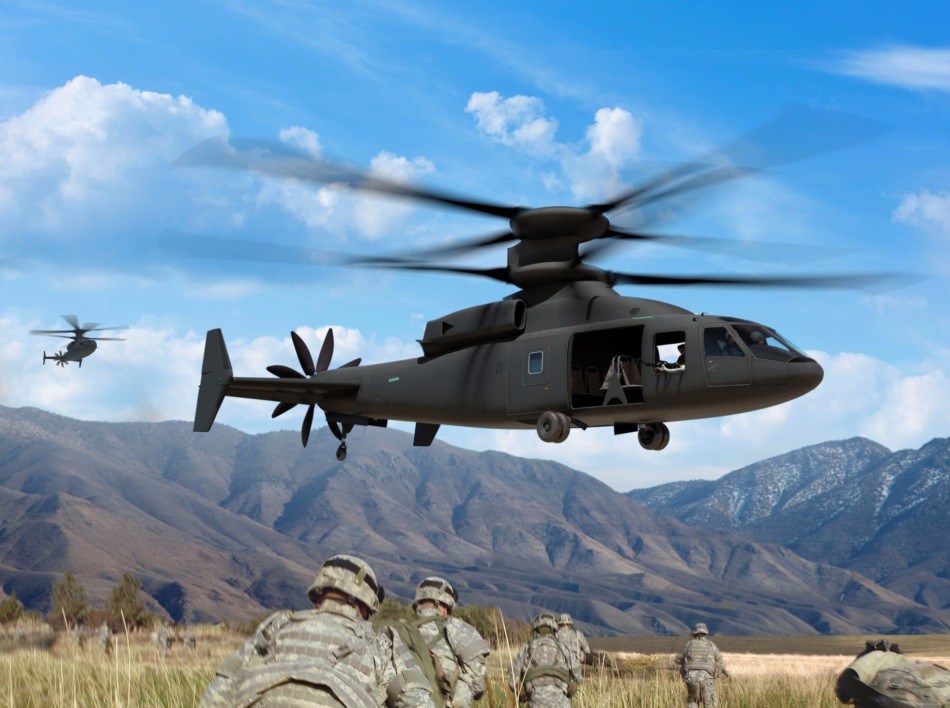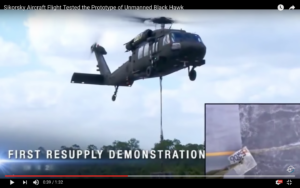Sikorsky Flies Triple Threat For FVL: Light, Medium, & Robot
Posted on

Sikorsky S-97 on its first flight
CRYSTAL CITY: This is the year Sikorsky catches up on the Future Vertical Lift program, company executives told reporters Monday. Yes, last year arch-rival Bell Helicopter was first to fly its entry in the Joint Multi-Role flight demonstration, the official lead-in to FVL. But this year Sikorsky will fly not one but three different aircraft showcasing FVL technologies:
- Sikorsky’s own JMR offering, a joint venture with Boeing called the SB>1 Defiant, which could evolve into the FVL medium variant replacing the UH-60 Black Hawk;
- the S-97 Raider, getting back into the air this spring after an accident last year, which could become FVL-light, a scout similar to the retired OH-58 Kiowa; and
- an “optionally piloted” UH-60 Black Hawk that fly unmanned or with a crew as needed, testing autonomy on a mature aircraft before it’s transferred to FVL.
“This year we fly three airplanes that are super relevant to Future Vertical Lift,” said Chris Van Buiten, Sikorsky’s VP for innovation, “so we congratulate the other guys on flying their one airplane.”

Sikorsky-Boeing SB>1 Defiant
Admittedly, Sikorsky’s making wine from sour grapes here. No doubt they’d have preferred to get their JMR demonstrator in the air earlier. They certainly didn’t want to land their original S-97 so hard it broke, as happened last year. Rather than take the time to recertify that aircraft as safe to fly, Sikorsky decided it was faster to convert their other S-97 to do flight tests, executives told me. Even so the accident delayed the program.
Nevertheless, Sikorsky’s three-pronged approach is genuinely interesting, not a mere makeshift. Over the years, the Army-led Future Vertical Lift initiative to replace the current generation of helicopters has evolved into a family of aircraft of different sizes with different roles, so Sikorsky having both the SB>1 and the S-97 is an advantage. Both use a compound-rotor technology that Sikorsky believes is more agile, stealthier, and generally more elegant than Bell’s tilt-rotor designs.

Sikorsky’s experimental unmanned UH-60 Black Hawk
FVL has also focused on the potential to augment or replace human pilots with automation, which fits well Sikorsky’s work on what’s called either “optionally manned” or “optimally manned” aircraft. The idea that automation takes over the routine business of flight — and incidentally keeps the aircraft from hitting the ground much more reliably than a distractible human — while the human focuses on the tactical mission.
Sikorsky has experimented with “click and fly” software, installed on an ordinary tablet, that allows even an untrained operator to direct the helicopter as if it were an Uber. It’s been flight-tested for DARPA on a Sikorsky S-76. “Any of you could fly that 76 with 10 minutes of orientation,” Van Buiten told reporters at Lockheed Martin’s annual media day. (Lockheed now owns Sikorsky). “Click on a tablet and take off, select destinations, and — instead of moving throttles and collective and cyclic and pedals — the high performance computer sorts out all those interactions and executes the maneuvers in the safest possible way.”
Subscribe to our newsletter
Promotions, new products and sales. Directly to your inbox.
